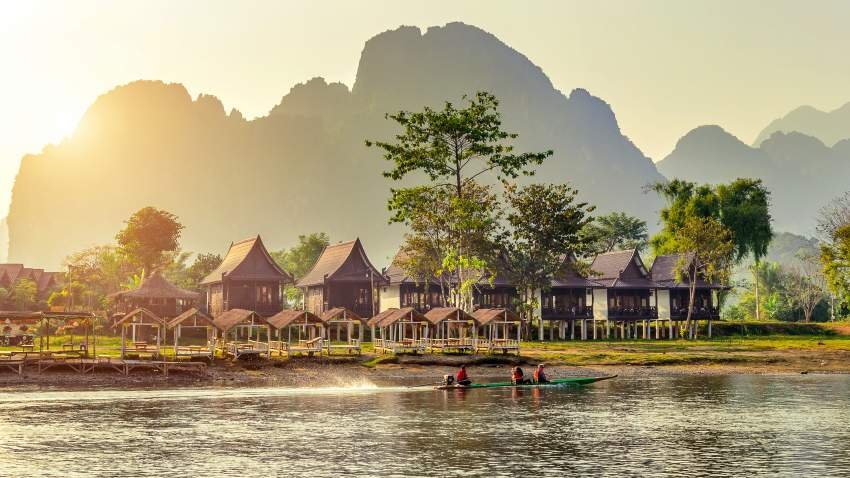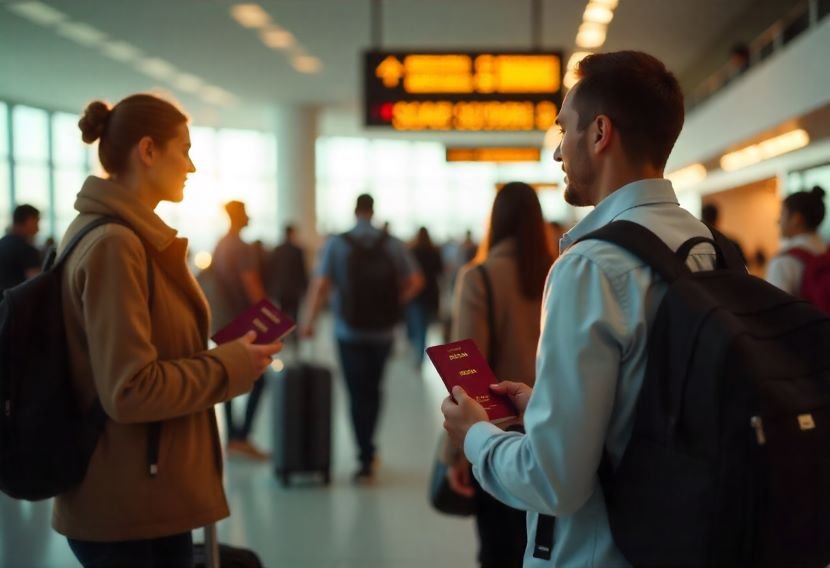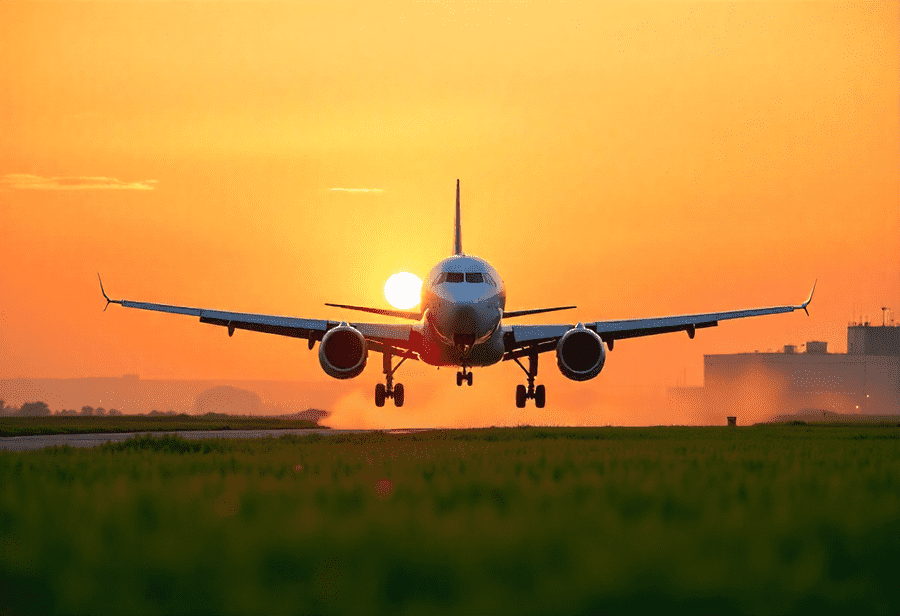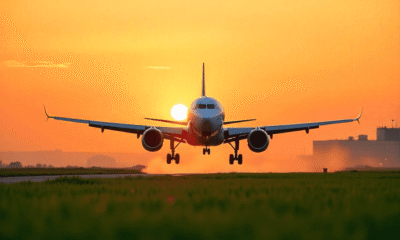Asia Travel Pulse
Laos Tourism Growth: Upgrading Infrastructure and Service Standards for a Better Visitor Experience

Thursday, July 31, 2025
Laos, a landlocked gem in Southeast Asia, is making tourism a key part of its economic growth plan. The country is investing in infrastructure, improving service standards, and starting several promotional efforts. These actions aim to make Laos a more appealing, competitive, and sustainable destination for international tourists. They also focus on expanding the tourism industry, increasing revenue, and providing lasting benefits for local communities.
The government of Laos has recognized the important role of tourism in economic development. As part of its strategic plans, the country focuses on improving the overall visitor experience. This involves a mix of initiatives, including updating transportation infrastructure and improving the quality of services in hotels, restaurants, and local attractions. Laos is also seeking international partnerships and promoting digital advancements to make the country more accessible and efficient for tourists.
Key Initiatives to Enhance Visitor Experience
To better cater to the needs of tourists, Laos is focusing on several initiatives designed to improve both infrastructure and service quality. Among the most notable measures are the modernization of the country’s border checkpoints and the introduction of digital payment systems. These improvements aim to streamline the travel experience for visitors while enhancing Laos’ appeal as a regional tourism hub.
In an effort to improve the overall visitor experience, Laos has also committed to expanding its media presence and increasing digital marketing campaigns. By promoting the beauty of the country through modern media channels, Laos seeks to reach new international audiences, particularly tourists from neighboring countries. The government plans to continue its investment in tourism promotion, focusing on digital platforms to broaden the reach and visibility of the country’s attractions.
Another key element of the government’s strategy is the review of existing visa policies. This review aims to ensure that Laos remains an attractive destination for tourists from around the world, making entry procedures more streamlined and accessible. By enhancing regional cooperation and simplifying travel arrangements, Laos hopes to create a more welcoming environment for international tourists.
Improving Service Standards and Community Involvement
A critical component of the tourism plan is the emphasis on improving the service standards across the nation. Local businesses, especially in regions like Luang Prabang, are working toward meeting the demands of modern tourists, ensuring that visitor satisfaction is prioritized. The growing recognition of tourism’s economic value has prompted both public and private sectors to collaborate in providing better services, cleaner environments, and more diverse cultural experiences for visitors.
Local workers such as hotel staff and tour guides are being trained to maintain high standards, ensuring that visitors experience top-notch services during their stays. The government is also continuing its national tour guide training program, which aims to produce skilled professionals capable of delivering enriching cultural experiences for tourists. These training efforts are expected to meet the rising demand for qualified guides and personnel as the tourism sector grows.
The involvement of local communities plays a significant role in the future of Laos’ tourism industry. Many community members understand the importance of hospitality and the need to continuously improve their services. This community-based approach allows local people to directly benefit from tourism, creating jobs and fostering a sense of pride in their culture and heritage.
Focus on Sustainable Tourism and Long-Term Economic Growth
Sustainability is at the core of Laos’ tourism vision. As the government works to develop tourism infrastructure, it is also placing great importance on preserving the environment and local culture. Initiatives are being introduced to ensure that tourism grows in a way that is socially responsible, economically beneficial, and environmentally sound. These measures include promoting ecotourism and reducing the negative environmental impact of tourism-related activities.
The Lao government has recognized the need to balance development with preservation. Efforts to promote sustainable tourism are expected to yield long-term benefits for the country’s natural and cultural heritage while supporting the livelihoods of local communities. Eco-tourism ventures are being encouraged, offering tourists the opportunity to engage with the environment and experience Laos’ rich natural beauty in a responsible way.
Promoting China-Laos Tourism Ties
In addition to domestic improvements, Laos is also focusing on enhancing its tourism ties with neighboring China. The second “Visit Laos-China Year” is set to take place, focusing on strengthening tourism cooperation between the two countries. Laos is eager to attract more Chinese visitors, who have already shown significant interest in the country. In 2024, Laos welcomed over 1 million Chinese tourists, and the trend has continued into 2025, with over 600,000 Chinese tourists recorded in the first half of the year.
The Laos-China tourism partnership is a key part of the broader efforts to increase international tourist arrivals. The two countries have long enjoyed close economic ties, and this collaborative effort is expected to deepen their relationship in the tourism sector. By focusing on attracting more Chinese tourists, Laos aims to enhance its tourism industry’s growth and boost the local economy.
2025 Goals: Ambitious Tourist Arrival Targets
Laos has set ambitious targets for the year 2025, aiming to welcome 4.3 million international tourists. This goal is not just about numbers; it is about creating a more sustainable, accessible, and enriching experience for every visitor. The government expects tourism to generate over 1 billion U.S. dollars in revenue, contributing significantly to Laos’ GDP and supporting a range of industries, including hospitality, transportation, and retail.
These projections are based on the successful implementation of the initiatives already underway, including the modernization of border controls, improved digital infrastructure, and ongoing efforts to develop a high-quality workforce. The government remains committed to ensuring that the tourism sector grows in a sustainable manner, allowing Laos to reap long-term benefits while preserving its cultural and natural resources for future generations.
A Bright Future for Laos’ Tourism Industry
As Laos works to improve its tourism sector, it’s clear the country is ready for sustainable growth. By focusing on infrastructure, service standards, regional cooperation, and sustainable practices, Laos is creating a strong tourism system that will benefit both visitors and locals. With increasing international interest, especially through initiatives like the Visit Laos-China Year, the country is poised to become one of Southeast Asia’s top travel destinations.
Through these joint efforts, Laos is not only improving its tourism options but also building a lively and inclusive economy, where tourism plays an important role in shaping the future.
Asia Travel Pulse
Asia Dominates Global Mobility as Qatar Stays Strong While US and UK Passports Decline

Saturday, August 2, 2025
Qatar’s passport has maintained its robust position in the latest update of the Henley Passport Index, holding steady at 47th globally, and retaining its position as the second most powerful passport in the Middle East. The 2025 quarterly update of the Henley Passport Index, released on July 22, 2025, reveals significant shifts in global mobility rankings, with Qatar and its regional neighbors making strides while long-standing global leaders like the United States and the United Kingdom continue to slide.
The Henley Passport Index ranks 199 passports from around the world based on how many destinations their holders can visit visa-free or with visa-on-arrival access. Qatar passport holders currently enjoy access to 112 destinations, a strong showing in a world where global travel freedom is highly valued. While Qatar remains a notable player in global travel access, several Asian countries have emerged as dominant forces in the latest index.
Regional Competitors: Qatar Among the Best in the Middle East
Among the Gulf Cooperation Council (GCC) countries, Qatar ranks second, just behind the United Arab Emirates (UAE). The UAE has made a strong leap forward, climbing two places to reach 8th globally, offering access to 184 destinations. Other GCC countries such as Kuwait (50th, 100 destinations), Saudi Arabia (54th, 91 destinations), Bahrain (55th, 90 destinations), and Oman (56th, 88 destinations) continue to benefit from improving travel access, with countries like Qatar and the UAE leading the region in terms of global mobility.
The strengthening of travel freedom for these countries reflects a broader trend in the region, where diplomatic relations and regional policies have fostered greater ease of travel for their citizens. Qatar’s strong standing highlights the country’s strategic global position and ongoing efforts to enhance connectivity.
Asia’s Dominance in the Global Mobility Rankings
As per the Henley Passport Index, Asian countries continue to dominate the top rankings, with Singapore holding the coveted 1st position, granting its citizens visa-free access to an impressive 193 destinations. Japan and South Korea are tied for 2nd place, offering 190 destinations each, reinforcing the global mobility advantage that Asia holds.
These developments mark a significant trend, as Asian passports have surged in strength over the past decade, with Singapore emerging as the leader in global travel freedom. This dominance not only reflects the economic growth and diplomatic strategies of these nations but also signals a shift in the global travel landscape, with countries in the Asia-Pacific region leading the charge in international mobility.
India’s Notable Improvement in Global Mobility
One of the most significant shifts in the latest Henley Passport Index is the rise of India. The country saw its largest-ever improvement, climbing eight spots to 77th place, up from 85th in 2024. Indian passport holders can now travel visa-free to 59 destinations, a marked improvement that reflects the country’s growing diplomatic reach and bilateral agreements with other nations.
This rise is notable for travelers, as it opens up more opportunities for business and leisure travel. With an increasing number of Indian citizens traveling abroad for both professional and personal reasons, this mobility improvement will have positive effects on tourism and business travel, particularly for destinations in Europe, Southeast Asia, and the Middle East.
Slipping Positions for US and UK Passports
Once considered among the world’s most powerful passports, both the United States and the United Kingdom have faced a decline in the Henley Passport Index rankings. The US passport has fallen to 10th place, with access to 182 destinations, marking its lowest position ever since the index began in 2006. Similarly, the UK has dropped one spot to 6th, with 186 destinations accessible without a visa.
This decline is significant, as both the US and UK once enjoyed the top spots for global mobility. The drop reflects shifting global dynamics, including changes in international relations, visa requirements, and the political landscape. For tourists and business travelers from the US and UK, this dip means more planning and potential visa applications when traveling to destinations they once could visit with ease.
Global Implications for Business and Tourism
The rankings of the Henley Passport Index are more than just a measure of travel freedom—they have far-reaching implications for business travel and tourism. As global mobility continues to evolve, these rankings highlight how countries can leverage their passports as a soft power tool to increase international relations, trade, and tourism.
For tourists and business travelers, the improved mobility of countries like India, Qatar, and UAE signals easier access to international markets and leisure destinations. Meanwhile, travelers from countries with declining mobility, such as the US and UK, may need to adjust their travel planning to accommodate new visa requirements.
Quick Tips for Travelers in Light of the Latest Passport Rankings
- Plan Ahead: If you hold a passport from a country with a lower ranking, check visa requirements for your destination ahead of time to avoid surprises.
- Leverage Visa-Free Options: Take advantage of the countries that now offer visa-free access, particularly for travelers from India, Qatar, and Singapore.
- Travel Smart: For business travelers, this shift in global mobility can impact international meetings and conferences. Always ensure that travel logistics are sorted well in advance.
- Stay Updated: As global travel regulations change frequently, especially for the US and UK passport holders, staying informed on the latest visa policies is crucial.
Conclusion: The Shifting Global Landscape of Travel
The Henley Passport Index for 2025 illustrates a shifting global mobility landscape where Asian and Middle Eastern countries are gaining ground, while the once-strong passports of the US and UK continue to decline. These changes are significant for both tourists and business travelers as they navigate a world where visa requirements are becoming increasingly complex.
The rise of countries like India in the rankings shows that the global travel environment is changing rapidly, with new opportunities emerging in Asia and the Middle East. Travelers and governments alike will need to stay nimble as these trends continue to shape the future of international mobility and tourism.
Asia Travel Pulse
Thailand Now Has Increased Connectivity With IndiGo’s New Daily Flights From Mumbai

Saturday, August 2, 2025
Thailand now has increased connectivity with IndiGo’s new daily flights from Mumbai, offering travelers more options and flexibility for their trips. This expansion aims to cater to growing demand between India and Thailand, providing seamless connections to key destinations like Bangkok and Phuket. By strategically adding these flights, IndiGo is making travel more accessible and convenient, allowing passengers to connect smoothly to long-haul services and enhancing the overall travel experience.
IndiGo has rolled out an exciting new promotion aimed at travelers planning trips to Thailand, offering a discount of up to 10% on fares when using the promo code 6ETHAI. This offer arrives at an opportune moment when key Thai destinations, such as Bangkok, Phuket, and Chiang Mai, continue to operate smoothly with flights running as expected. For those eager to explore the vibrant culture, stunning beaches, and rich history of Thailand, this limited-time discount makes traveling even more affordable.
The timing of this promotion aligns with Thailand’s low season, which typically spans from July to September, coinciding with the monsoon. Although the wet season can be unpredictable, it presents an ideal opportunity for travelers seeking more affordable accommodations and fewer crowds at popular tourist sites. During this period, hotel prices drop, and reservations at renowned restaurants can be made without hassle. With fewer tourists around, visitors can enjoy popular attractions without long lines or congested spaces. For those who enjoy a quieter experience, traveling during the low season can be incredibly rewarding.
However, travelers should remain mindful of the weather conditions during Thailand’s monsoon period. While rain is common, it can be unpredictable, with sudden bursts of heavy rainfall or long stretches of days where showers may disrupt travel plans. In certain regions, such as the islands, boat services can experience delays or cancellations due to adverse weather. For those hoping to explore the country’s many islands, it is important to monitor local forecasts and adjust travel plans accordingly.
IndiGo Expands Reach with Increased Flight Offerings
In addition to the discounted fares, IndiGo has been expanding its presence in Southeast Asia, particularly in Thailand. The airline recently introduced a second daily flight between Mumbai and both Bangkok and Phuket, starting from July 2025. This move is part of IndiGo’s strategy to enhance its connectivity to Southeast Asia and offer more options for passengers traveling to Thailand. The added flights allow travelers greater flexibility in planning their trips, providing more choices for those flying from Mumbai.
These flights are carefully scheduled to ensure easy connections with the airline’s long-haul routes to Europe. This makes it convenient for passengers traveling to Thailand to seamlessly transfer to flights bound for various European destinations through IndiGo’s expanding Mumbai hub. The addition of these flights will provide a much-needed boost to tourism and business travel between India and Thailand, offering travelers smooth and quick connections.
The move to increase flight frequency between Mumbai and Thailand is just one element of IndiGo’s larger international growth strategy. The airline is positioning itself as a key player in the global aviation market by expanding its reach beyond South Asia. As part of this effort, IndiGo has entered into a fleet expansion program that involves the lease of Boeing 787-9 Dreamliners from Norse Atlantic Airways, beginning in early 2025. These modern aircraft are expected to enhance the airline’s capacity on high-demand routes such as Delhi to Bangkok, which saw its operations launched in March 2025.
This strategic fleet expansion is set to accommodate the growing demand for flights to and from Southeast Asia, particularly as travelers look for affordable and reliable options to connect with key destinations like Thailand. IndiGo’s commitment to increasing its international flight offerings demonstrates its ambition to offer passengers greater choice and flexibility in their travel plans.
Security Advisory for Travel to Border Provinces
While the expansion of IndiGo’s services to Thailand is promising, it is important for travelers to remain informed of any safety concerns. Recently, a security advisory was issued for Indian nationals traveling to certain regions in Thailand. The advisory specifically recommends avoiding non-essential travel to the border provinces of Chanthaburi and Sa Kaeo. These areas have experienced some security concerns, and travelers are encouraged to stay updated on the situation.
In response to the ongoing security situation, emergency contact numbers have been provided to Indian nationals who are already in the region. This measure ensures that travelers can seek assistance if needed. Although most parts of Thailand remain safe for tourists, it is essential to stay informed of any local issues that may affect travel plans. As always, travelers should exercise caution and follow official guidance when visiting areas with potential risks.
A Thriving Travel Destination
Despite the potential challenges posed by the monsoon season and security concerns in certain regions, Thailand remains a popular and vibrant travel destination. The country offers a diverse range of experiences, from bustling cities to tranquil islands, rich cultural heritage to modern attractions. Whether exploring the ornate temples in Chiang Mai, lounging on the white sandy beaches of Phuket, or experiencing the vibrant street life of Bangkok, there’s something for every type of traveler.
IndiGo’s new promotion, combined with its expanding flight offerings, makes it easier for travelers to visit Thailand at a more affordable price, while also providing more options for smoother connections to other international destinations. With its growing international network and commitment to offering value-driven services, IndiGo continues to make travel more accessible for its passengers, helping them discover the beauty and charm of Thailand.
Thailand now benefits from increased connectivity with IndiGo’s new daily flights from Mumbai, providing more travel options and seamless connections to key destinations in Southeast Asia. This expansion meets growing demand and enhances travel flexibility for passengers.
In conclusion, whether travelers are looking for an off-peak getaway or planning a longer vacation to explore Thailand’s diverse attractions, IndiGo’s promotion, paired with its growing network of flights to Thailand, offers a great opportunity to visit the Land of Smiles at a discounted price.
Asia Travel Pulse
Thailand, China, Japan Set Ambitious Tourism Goals For 2026 With Strategic Focus On Repeat Visitation, Safety Upgrades, And Revitalization Of International Travel Demand

Saturday, August 2, 2025
Thailand is aiming to welcome 9 million Chinese tourists by 2026 as part of an aggressive recovery strategy fueled by government-backed charter flight subsidies, large-scale group travel, and major international events. This renewed momentum comes as Thailand positions itself as a safer, more reliable destination compared to regional competitors like Vietnam, which, despite offering lower travel costs, struggles to match Thailand’s infrastructure, service quality, and visitor satisfaction. With rising demand from Chinese tour operators and confidence returning among travelers, Thailand is betting on targeted incentives and high-profile gatherings to regain its dominant position in Asia’s tourism market.
Thailand is preparing for a strong revival in Chinese tourism, projecting 9 million arrivals from China by 2026. After several years of disrupted international travel, this rebound reflects renewed confidence among travelers and a series of strategic efforts by Thai authorities and the tourism industry. Key drivers include the return of large group tours, government-backed charter flight subsidies, and global business events that highlight Thailand’s appeal as a safe and reliable destination.
Tourism officials and industry stakeholders have focused heavily on restoring Chinese travel to pre-pandemic levels. In 2019, China represented the largest inbound market for Thailand with 10.9 million visitors. Though the industry has faced challenges in the post-pandemic era, Thailand’s latest recovery strategies are gaining traction and could bring the numbers close to the previous high.
A key component of the strategy is a charter flight subsidy program that provides 350,000 baht per flight to operators bringing Chinese tourists into Thailand. This financial incentive aims to increase flight frequency and accessibility from various cities in China. Already, new travel agreements with agencies in cities such as Chongqing, Lanzhou, and Hangzhou signal rising interest and readiness to participate in this initiative. The government expects this measure alone to attract at least 150,000 Chinese visitors over the next year.
Alongside this effort, Thailand is targeting the high-value MICE (Meetings, Incentives, Conferences, and Exhibitions) sector. This segment tends to bring in business travelers and corporate groups who spend significantly more than the average tourist. Officials project around 75,000 visitors will come to Thailand through MICE-specific subsidies and support. This segment also strengthens Thailand’s image as a well-equipped host for global-scale gatherings.
Large corporate incentive events scheduled in Bangkok are also expected to contribute significantly. One such event, set for March and April 2026, will bring 13,000 international delegates. The presence of such a large group reinforces confidence in Thailand’s hospitality capabilities and sends a strong signal to both the Chinese market and other international travelers. These events showcase the country’s infrastructure, professionalism, and safety protocols, which are essential to rebuilding trust among global travelers.
Travel insiders believe that these group visits not only bring immediate economic benefits but also serve as an important trust-building exercise. When large delegations safely and successfully visit Thailand, it restores confidence among travelers who may still be hesitant to travel independently. As confidence improves, individual bookings and smaller group trips are expected to rise, creating a domino effect throughout the tourism industry.
In October 2026, Thailand will host the World Bank Governors’ Meeting, a major international event with significant media and diplomatic attention. This gathering offers another opportunity for Thailand to promote itself as a secure, modern, and globally connected destination. The event will spotlight Thailand’s transportation systems, hospitality sector, and security readiness—all crucial factors in maintaining and growing international tourism.
As a result of these combined efforts, tourism experts predict that the ongoing charter flight subsidy program could increase air traffic from China fivefold. This surge in flights may bring in approximately 1 million of the anticipated 9 million Chinese visitors by the end of 2026.
Chinese travel agencies and tour operators have shown considerable enthusiasm for these initiatives. Industry figures expect the impact of the subsidies and promotional campaigns to become visible by November and December of this year. Provided that no major disruptions occur, Chinese arrivals in Thailand could recover to 70–80% of pre-pandemic levels by late 2025 and continue to grow into 2026.
While regional competitors like Vietnam have gained temporary attention due to lower travel costs, they still fall short of Thailand in terms of service quality and overall visitor experience. Many Chinese travelers who visit Vietnam do not return for a second trip. In contrast, Thailand offers a more comprehensive and premium tourism product, which encourages repeat visits and longer stays.
Safety concerns, which previously affected travel decisions, are beginning to ease as Thailand continues to invest in better infrastructure and tourist services. If the country maintains this trajectory, it is expected to win back the trust of the Chinese market and emerge stronger than before.
In response to a significant 34.1% decline in Chinese arrivals during the first half of the year, Thai tourism authorities launched a promotional roadshow across key cities in China. This campaign aimed to reestablish direct contact with travel partners, strengthen brand visibility, and update Chinese stakeholders on the new incentive programs and travel offerings in Thailand.
Although the 9-million figure serves as a strong projection, Thailand’s tourism authority has not yet declared it an official target. Officials are approaching the forecast cautiously, taking into account global uncertainty and potential market fluctuations. They continue to monitor both economic and geopolitical developments closely, ensuring that the country remains agile in adapting to new conditions.
Thailand is targeting 9 million Chinese tourists by 2026 through charter flight subsidies, group travel incentives, and global events, while Vietnam struggles to compete due to weaker infrastructure and lower service quality.
Nevertheless, momentum is clearly building. With new airline partnerships, focused promotional efforts, and growing traveler confidence, Thailand is positioning itself for a major tourism recovery led by Chinese visitors. As travel demand continues to increase and trust is rebuilt through strategic events and large group arrivals, Thailand stands poised to regain its place as one of the top international destinations for Chinese tourists.
-

 Brand Stories2 weeks ago
Brand Stories2 weeks agoBloom Hotels: A Modern Vision of Hospitality Redefining Travel
-

 Brand Stories1 week ago
Brand Stories1 week agoCheQin.ai sets a new standard for hotel booking with its AI capabilities: empowering travellers to bargain, choose the best, and book with clarity.
-

 Destinations & Things To Do2 weeks ago
Destinations & Things To Do2 weeks agoUntouched Destinations: Stunning Hidden Gems You Must Visit
-

 Destinations & Things To Do1 week ago
Destinations & Things To Do1 week agoThis Hidden Beach in India Glows at Night-But Only in One Secret Season
-

 AI in Travel2 weeks ago
AI in Travel2 weeks agoAI Travel Revolution: Must-Have Guide to the Best Experience
-

 Brand Stories4 weeks ago
Brand Stories4 weeks agoVoice AI Startup ElevenLabs Plans to Add Hubs Around the World
-

 Brand Stories3 weeks ago
Brand Stories3 weeks agoHow Elon Musk’s rogue Grok chatbot became a cautionary AI tale
-

 Asia Travel Pulse4 weeks ago
Asia Travel Pulse4 weeks agoLooking For Adventure In Asia? Here Are 7 Epic Destinations You Need To Experience At Least Once – Zee News
-

 AI in Travel4 weeks ago
AI in Travel4 weeks ago‘Will AI take my job?’ A trip to a Beijing fortune-telling bar to see what lies ahead | China
-

 Brand Stories4 weeks ago
Brand Stories4 weeks agoChatGPT — the last of the great romantics













You must be logged in to post a comment Login